Get To Know Smokey Bear
About the Smokey Bear PSA Campaign
At more than 80 years, this is the longest-running public service advertising campaign in U.S. history.
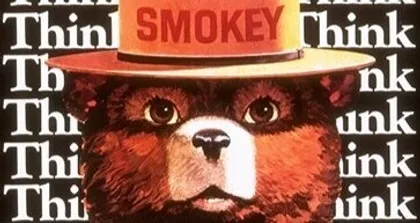
Smokey’s Message Still Stands
Smokey has educated generations of Americans about their role in preventing unwanted, human-caused wildfires and protecting our nation’s beautiful wildlands. It all started with the first campaign posters in 1944, during the height of World War II.
Now more than 80 years later, wildfire prevention remains one of the most critical issues affecting our country, and Smokey's powerful message "Only you can prevent wildfires" remains as relevant and urgent as ever.
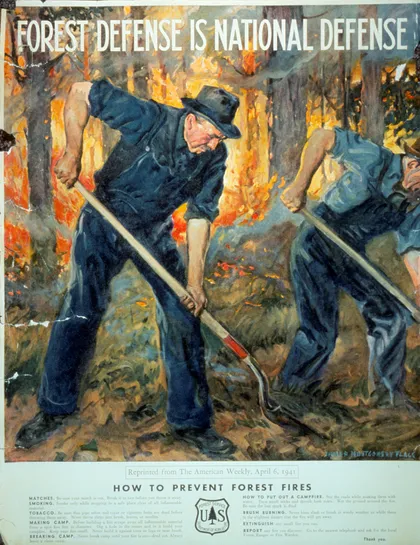
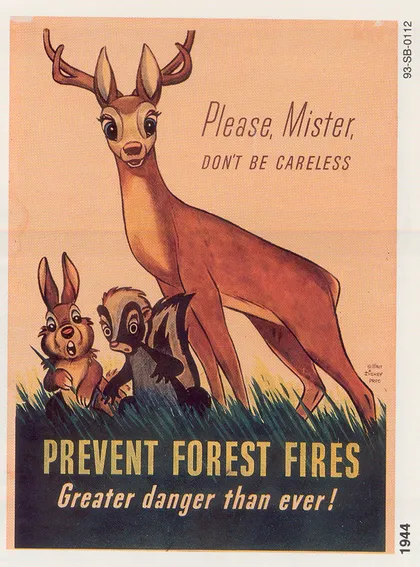
Wildfire Prevention Before Smokey
On December 7, 1941, Japanese planes attacked Pearl Harbor. The following spring, Japanese submarines surfaced near the coast of Santa Barbara, California, and fired shells that exploded on an oil field very close to the Los Padres National Forest.
That brought a fear that incendiary shells exploding in the forests along the Pacific Coast would ignite raging wildfires since experienced firefighters were deployed overseas. Forest protection became a matter of national importance, and a new idea on how to fight this problem was born: if people were urged to be more careful, some of the fires could be prevented.
To rally Americans around this cause and convince them it would help win the war because wood was an important military resource during World War II, the Forest Service organized the Cooperative Forest Fire Prevention (CFFP) program with the help of the War Advertising Council (now the Ad Council), and the Association of State Foresters. Together, they created posters and slogans, including “Forest Fires Aid the Enemy” and “Grass is Life, Protect It."
Then, a stroke of luck happened in 1942. With the release of Walt Disney's wildly popular movie Bambi, forests and their animal inhabitants were celebrated. Disney allowed the CFFP program to use the film's characters on a 1944 poster.
The Bambi poster was a success and proved the effectiveness of using an animal as a fire prevention symbol. The CFFP would need to find a new animal symbol that belonged to them, and nothing seemed more fitting than the strong and confident bear.

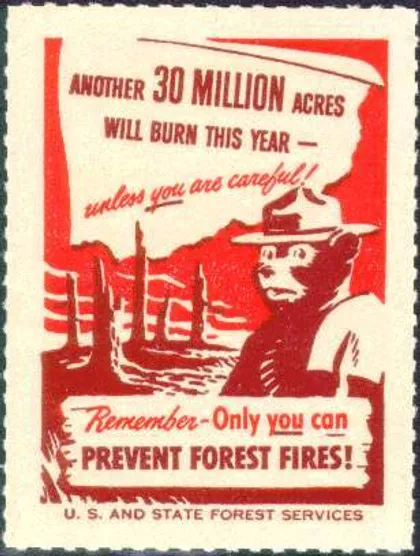
The Smokey Bear PSA Campaign is Born
The USDA Forest Service, National Association of State Foresters, and the Ad Council partnered with advertising agency Foote, Cone & Belding (FCB) to create the Smokey Bear campaign in 1944. FCB continues to partner with the Smokey Bear campaign to create new public service announcements (PSAs) on a pro-bono basis to this day.
His signature phrase, “Remember... Only YOU Can Prevent Forest Fires,” was introduced three years later, in 1947.
Smokey soon became popular, and his image began appearing on more posters and cards as he started to attract commercial interest. Now, Smokey is one of America’s most recognizable characters.
Smokey Bear Becomes Protected by Law
In 1952, Congress passed the Smokey Bear Act, protecting him under federal law. This act removed Smokey from the public domain and placed him under the control of the Secretary of Agriculture.
The act allowed royalties and fees from the campaign to be used for continued wildfire prevention education.
Smokey's image is still protected by U.S. federal law and is administered by the USDA Forest Service, the National Association of State Foresters, and the Ad Council.
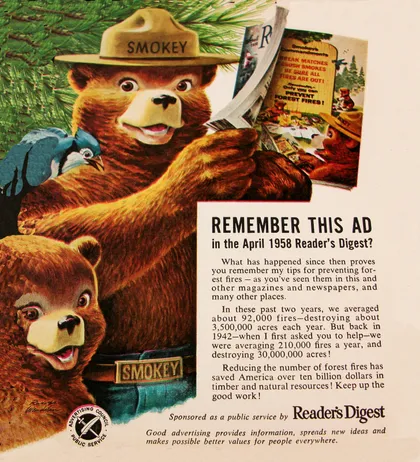
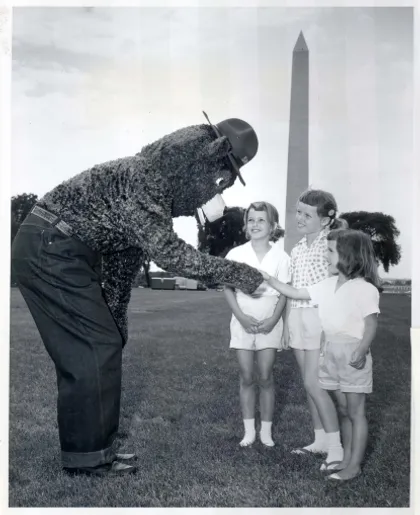
Changing with the Times
A few years after the campaign started, Smokey could be seen and heard nationwide on TV and radio. Smokeyʼs “ABCˮ campaign, which ran through the 1950s and 1960s, was the first to be broadcast on TV. Celebrities of the time, like Bing Crosby and Roy Rogers, lent their voices to the campaign on the radio. Smokey has remained on TV, radio, newspaper, and magazine ads through the decades.
Today, you can even find him on online videos, social media, and digital advertisements.
Smokey’s “Only You Can Prevent Wildfires” message is almost identical to when he was created in the 1940s, while his PSAs have continued to evolve through the years.
The PSAs make sure the wildfire prevention tips are focused on the most relevant “fire starters” of the day. In the ‘50s and ‘60s, when cigarettes were more popular, much of the messaging focused on making sure folks knew to be careful extinguishing them. Today, the PSAs focus on fire safety tips for campfires, outdoor grilling, and vehicles and equipment.
Likewise, Smokey's tone adapts to the time period – there have been times when Smokey has been more stern and other times when he’s a little more playful. It all depends on what Americans will be receptive to in that moment, and Smokey’s biggest priority is making sure he reaches people where they are so they can get the important information.
While Smokey's PSAs were most popular on radio and print media from the 1950s through the 1980s, he now appears on TV, online video, social media, and digital advertisements.

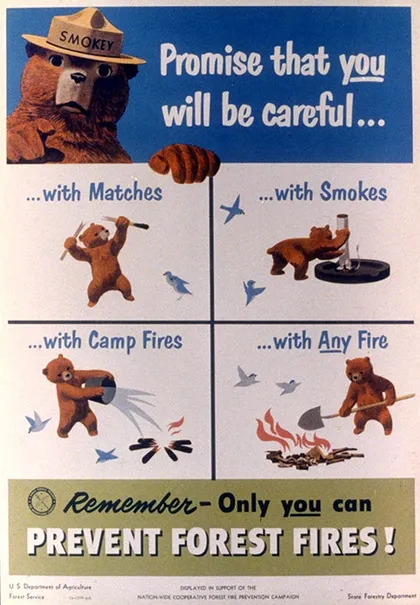
"Only you..."
In 2001, in response to a massive outbreak of wildfires in natural areas outside of forests, Smokey’s catchphrase was updated to the one still used today — "Only You Can Prevent Wildfires.”
The new saying helped clarify that Smokey is promoting the prevention of unwanted and unplanned outdoor fires rather than natural and safe prescribed fires.
Though he has already accomplished so much, Smokey's work is far from over. Wildfire prevention remains crucial, and he still needs your help.
His catchphrase reflects your responsibility: Only YOU can prevent wildfires. Remember that this phrase is so much more than just a slogan — it's an important way to care for the world around you.
Get to know Smokey Bear
Since 1944, Smokey’s been working hard to inspire Americans to prevent wildfires. Follow his history here through memorabilia and print, radio and TV messages.